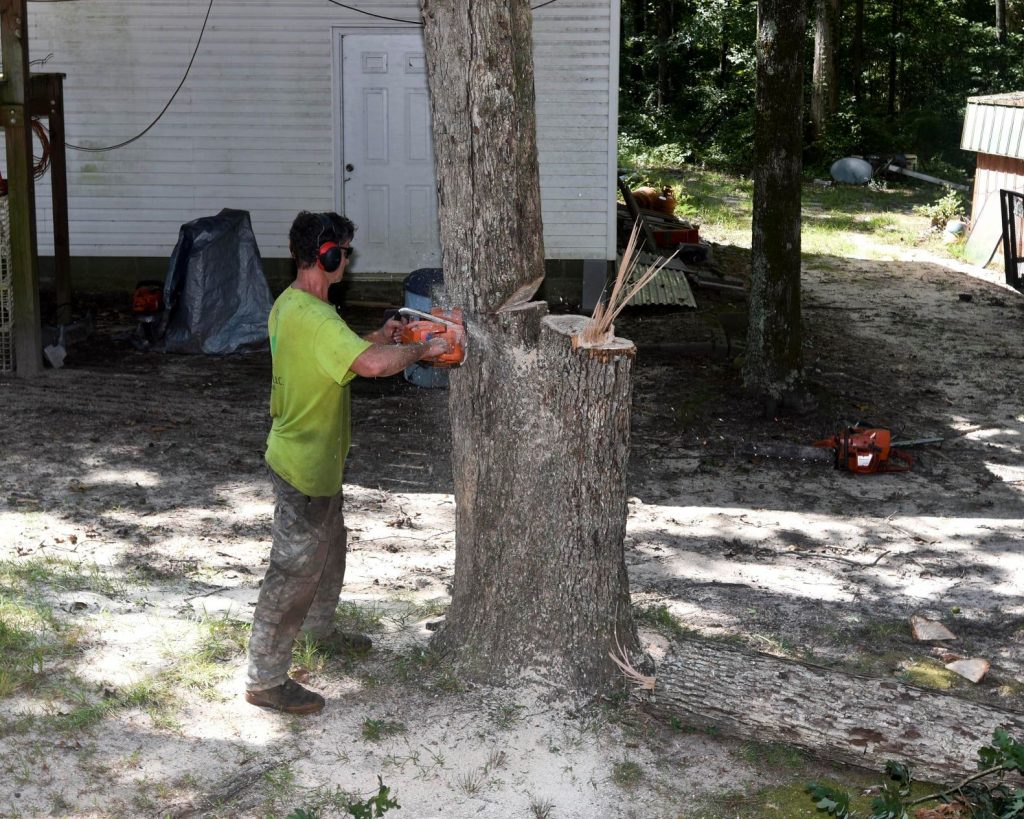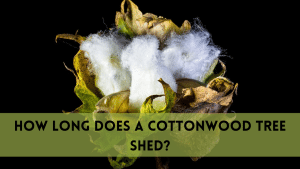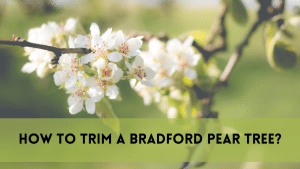You are aware of the grandeur and beauty of Palo Verde trees if you have one in your yard. However, understanding how to trim a Palo Verde tree is crucial to maintaining its health and aesthetic appeal. Trimming aids in preserving its general look, health, and form.
Understanding Your Palo Verde Tree before Trimming
Before you start trimming, it’s crucial to understand your Palo Verde tree. These trees are known for their green bark and vibrant yellow flowers, adding a touch of desert beauty to any landscape. However, they can also grow quite tall and wide if left unchecked.
Reasons to Trim Your Palo Verde Tree?
There are several reasons to trim your Palo Verde tree. Its primary purpose is to encourage healthy development by cutting out unhealthy or dead branches. In addition to preventing overgrowth and preserving the tree’s form, trimming lowers the possibility of limbs falling during a storm.
When to Trim Your Palo Verde Tree
The best time to trim your Palo Verde tree is during its dormant season, which typically occurs in late winter or early spring. Trimming during this time minimizes stress on the tree and encourages new growth once the warmer weather arrives.
Equipment You’ll Need to Trim Palo Verde Tree
Having the appropriate equipment on hand is crucial for efficiently cutting your Palo Verde tree. With the help of each tool’s distinct function, you may prune branches with care and accuracy. The following provides a thorough breakdown of the necessary tools:
Shears for pruning: Pruning shears, sometimes referred to as hand pruners, are made to cut tiny branches and twigs up to one inch in diameter. They offer accurate and clean cuts because of its bypass or anvil cutting mechanism and sharp blades. Pruning shears are perfect for precise pruning chores since they are lightweight and simple to use.
Loppers: Having wider blades and longer handles than pruning shears, limpers make it easier to cut through thicker branches. They are appropriate for medium-sized pruning projects since they can handle branches up to 2 inches in diameter. Loppers are available in bypass, anvil, and ratchet designs, each with a different amount of cutting efficiency and power.
Pruning Saw: A pruning saw is essential for trimming branches that are too thick to trim with shears or loppers. The sharp, serrated blades of pruning saws are made to rapidly chop through branches up to five inches in diameter. They are available in a variety of sizes and forms, such as folding saws for convenient storage and curved blades for improved cutting efficiency.
Safety Gear: When pruning trees, safety should always come first. To shield your hands from blisters, splinters, and thorns, put on strong gloves. Wearing safety glasses lowers your chance of harm by protecting your eyes from flying branches and debris. To avoid slips and falls when working at heights, use sturdy shoes with strong grip.
With these basic instruments and safety equipment, you’ll be ready for any pruning job your Palo Verde tree throws at you. To maintain the health of your tree and your own safety, always remember to use caution while handling any tools and to prune according to the right procedures.
How to Trim a Palo Verde Tree
Inspect the Tree: Walk around the tree and assess its overall health. Look for dead, damaged, or diseased branches that need removal.
Plan Your Cuts: Determine which branches to trim to maintain the tree’s shape and promote healthy growth. Avoid cutting more than 25% of the tree’s canopy to prevent stress.
Start with Dead or Diseased Branches: Gently cut off any dead or diseased branches using pruning shears or loppers. To promote good recovery, trim them back to the closest robust growth node or branch collar.
Eliminate Crossing Branches: Find branches that overlap or rub against one another. Pruning back these branches can reduce pressure and prevent injury.
Trim for Clearance: Remove any low-hanging or obstructive branches that impede foot traffic or block pathways. Trim branches to achieve desired clearance while maintaining the tree’s natural shape.
Prune Wisely: When making cuts, follow the natural shape of the tree and avoid cutting too close to the trunk. Leave the branch collar intact to promote proper healing and prevent disease.
Step Back and Assess: Periodically step back and assess your progress as you trim. Ensure the tree maintains a balanced and aesthetically pleasing shape from all angles.
Clean Up Debris: Once you’ve finished trimming, gather and dispose of any debris promptly. This helps prevent pests and disease from infesting the tree.
Advice to Make Palo Verde Trimming Successful
It takes more than simply the appropriate equipment and methods to achieve the best results when pruning a Palo Verde tree. To improve your performance with trimming, take into account these extra suggestions:
Recognise Your Tree: Making informed pruning decisions may be aided by being aware of the unique traits of your Palo Verde tree, including its branching structure, growth patterns, and general health. Make a note of any regions that need extra care, including illness symptoms or weak branches.
Timing Is Everything: Proper pruning of your Palo Verde tree may have a big influence on its growth and health. When the tree is dormant, which is usually late winter or early spring, it is less vulnerable to disease and stress. This is the best time to prune. Trimming should be avoided when the weather is extremely hot or cold, since this might prevent the tree from recovering.
Use Appropriate Pruning Methods: When making cuts, adhere to recommended pruning guidelines to encourage strong growth and reduce tree damage. To make clean, swiftly healing wounds, use sharp, clean equipment. To promote healthy healing and avoid infection, make a cut slightly beyond the branch collar the swelling region where the branch joins the trunk or main branch.
Refrain from Over Trimming: Although it might be alluring to cut off as many branches as you can, resist the urge to over prune your Palo Verde tree. Excessive leaf removal can cause stress to the tree and impede its photosynthetic capacity, resulting in reduced development and heightened susceptibility to pests and disease. In each pruning session, try to remove no more than 25% of the tree’s canopy.
Keep an Eye Out for Stress or Illness Signs: In the weeks that follow pruning, pay special attention to your Palo Verde tree for any indications of illness or stress. Look out for any signs of underlying problems, such as withering leaves, strange colouring, or insect infestations. As soon as possible, have a competent arborist or horticulturist advise you on any problems.
Mulch and Water Properly: After pruning, mulch the base of the tree with organic material to keep moisture in, control soil temperature, and prevent weed development. To maintain the tree’s health and vigour, give it regular, thorough watering—especially in dry spells or extremely hot weather.
Think About Expert Assistance: Don’t be afraid to get expert help if you don’t know how to prune your Palo Verde tree or if it has to be pruned severely. An expert in tree care or licensed arborist may evaluate the tree’s health, suggest suitable pruning methods, and offer insightful advice on long-term upkeep.
You may encourage the lifespan, beauty, and health of your Palo Verde tree while taking pleasure in the process of maintaining your outdoor area by adding these extra suggestions to your routine of pruning. Keep in mind that pruning requires time, close attention to detail, and a great respect for your tree’s inherent beauty.
FAQ
When is the best time to trim a Palo Verde tree?
The ideal time to trim your Palo Verde tree is during its dormant season, typically in late winter or early spring. Trimming during this period minimizes stress on the tree and encourages healthy growth.
How much of my Palo Verde tree can I trim at once?
It’s generally recommended to trim no more than 25% of your Palo Verde tree’s canopy during any single trimming session. Over-pruning can stress the tree and impede its ability to thrive.
What equipment is required to trim a Palo Verde tree?
Pruning shears for smaller branches, loppers for bigger limbs, pruning saws for greater limbs, and safety equipment like gloves and safety glasses are necessary while trimming a Palo Verde tree.
How do I know if a branch needs to be trimmed?
Look for signs of dead, damaged, or diseased branches, such as lack of foliage, discoloration, or pest infestations. Additionally, remove any branches that cross over each other or obstruct pathways.
Can I trim my Palo Verde tree myself, or should I hire a professional?
While minor trimming tasks can be done by homeowners, extensive pruning or trimming near power lines should be left to certified arborists or tree care professionals to ensure safety and proper tree care.
Conclusion
Trimming your Palo Verde tree doesn’t have to be daunting. With the right tools, knowledge, and approach, you can keep your tree looking beautiful and thriving for years to come. Remember to trim during the dormant season, prioritize the tree’s health, and enjoy the process of caring for your slice of desert paradise.





